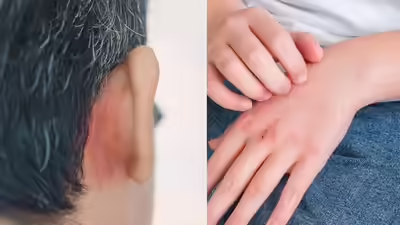Parkinson’s disease (Parkinson’s disease) is usually associated with motor symptoms such as shaking, stiffness and slow movements, but non-motor signs, especially skin-related problems, are often overlooked. Research shows that skin manifestations, including dryness, seborrheic dermatitis, excessive sweating and vascular changes, are very widespread among Parkinson’s disease patients and can significantly affect the quality of life. Interestingly, these dermatological symptoms can already appear before motor signs, which offers potential early diagnostic clues. Recognizing and managing skin conditions in Parkinson’s disease is crucial to improving the patient’s comfort, supporting general health and potentially helping to previously detect the disease, which highlights their clinical significance.
Understand what Parkinson’s disease is and its symptoms of the skin
Parkinson’s disease is a progressive neurodegenerative disorder that mainly affects movement, which causes symptoms such as shaking, stiffness, bradykinesia (slowness in motion) and postural instability. This occurs due to the loss of dopamine -producing neurons in the brain, especially in substantia nigra. In addition to motor symptoms, Parkinson’s disease is also associated with a number of non-motor manifestations, including cognitive changes, sleep disorders, autonomous dysfunction and dermatological problems. Skin problems in Parkinson’s disease are common and can affect the patient’s quality, sometimes even previous motor symptoms.1. Seborrheic DermatitisSeborrheic dermatitis is a chronic inflammatory skin condition characterized by red, flaky and fatty spots, which usually affect the scalp, face and upper chest. Studies have shown that seborrheic dermatitis is more common in individuals with Parkinson’s disease than in the general population. Especially a study published in Journal of Clinical Neuroscience suggests that seborrheic dermatitis may precede the clinical beginning of Parkinson’s disease, which potentially acts as an early warning sign 2. HyperhidrosisHyperhidrosis, or excessive sweating, is a common non-motor symptom in Parkinson’s disease patients. It is manifested as abundant sweating, often not related to physical activity or temperature and can be particularly troublesome during the night. Research indicates that hyperhidrosis of Parkinson’s disease may be associated with autonomous dysfunction, where the body’s ability to regulate sweat production is impaired 3. Dry skin (xeros)Xeros or dry skin is often reported among Parkinson’s disease patients. This condition leads to coarse, flaky skin and can cause discomfort and itching. The presence of xeros in Parkinson’s disease has been emphasized in studies, with results suggesting that most of Parkinson’s disease patients experience some form of skin manifestation, including dry skin 4. MelanomaPeople with Parkinson’s disease have an increased risk of developing melanoma, a serious form of skin cancer. Research indicates that the presence of melanoma is significantly higher in Parkinson’s disease patients compared to the general population. A study published in Dermatology practical and conceptual Found that Parkinson’s disease patients have two to seven times greater risk of developing melanoma, which may be linked to shared pathophysiological mechanisms involving protein-synuclein5. PruritusPruritus, or itching, is a common complaint among Parkinson’s disease patients. It may be the result of xeros or other dermatological conditions and can significantly affect the quality of life. The management often involves managing the underlying skin condition and using appropriate current treatments.6. Rosacea and Cherry AngiomaRosacea, a condition characterized by facial redness and visible blood vessels, and cherry angiomas, benign red moles, has been observed in Parkinson’s disease patients. A significant correlation between rosacea and cherry angioma was noted in Journal of Dermatology and Clinical Research study. These vascular changes may be associated with autonomous dysfunction seen in Parkinson’s disease.Disclaimer: Disclaimer: This article is only for information purposes and does not constitute medical advice. Always consult a qualified healthcare professional before making any changes to your health routine or treatment.Also read | What causes swelling in the fingers: know 8 common reasons behind it





